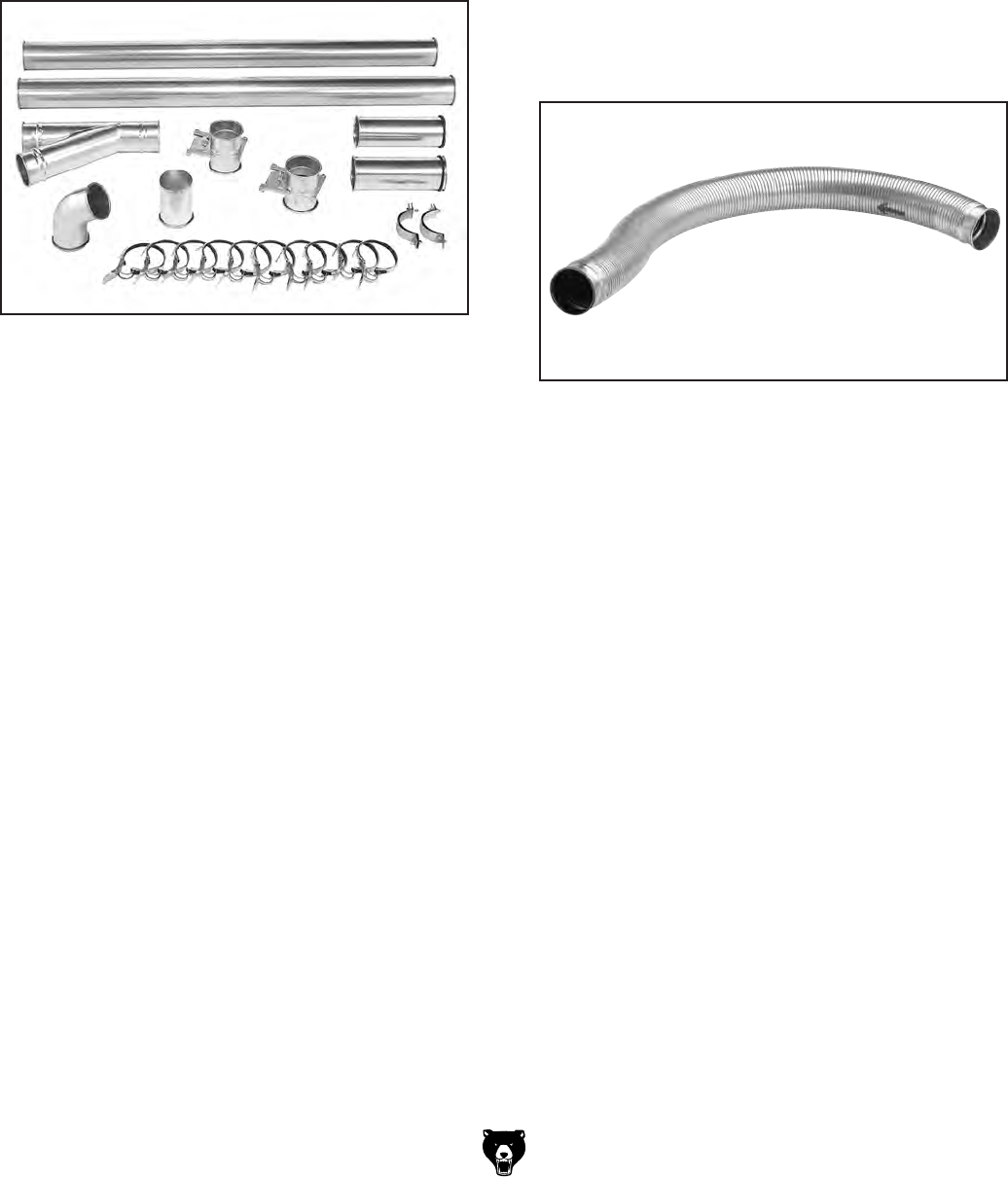
There are a number of options when it comes to
metal duct, but metal duct that is specially manu-
factured for dust collection is the best choice.
When selecting your metal duct, choose high
quality metal duct with smooth welded internal
seams that will minimize airflow resistance. This
type of duct usually connects to other ducts
or elbows with a simple, self-sealing clamp, is
very quick and easy to assemble, and can be
readily dismantled and re-installed. This is espe-
cially important if you ever need to change things
around in your shop or add more tools.
Avoid inferior metal duct that requires you to cut it
to length and snap it together. This type of duct is
time consuming to install because it requires you
to seal all the seams with silicone and screw the
components on the ends with sheet metal screws.
Another disadvantage is the rough internal seams
and crimped ends that unavoidably increase static
pressure loss.
There are also many kinds of pure plastic flexible
hose, such as non-perforated drainage type hose
and dryer vent hose. Drainage type hose, while
being economical, does not quite have the flex-
ibility required for dust collection. The inside of the
duct is also deeply corrugated and can increase
the static pressure loss by as much as 50% over
smooth wall duct. Dryer vent hose, while being
completely flexible, is non-resistant to abrasion
and has a tendency to collapse in a negative
pressure system. We DO NOT recommend using
dryer vent hose in your dust collection system.
If using flex-hose, you should choose one of the
many types that are designed specifically for the
movement of solid particles, i.e. dust, grains,
and plastics. However, the cost of specifically
designed flexible duct can vary greatly. Grizzly
offers polyethylene hose, which is well suited for
the removal of particulate matter, especially saw-
dust, since it is durable and completely flexible.
Polyethylene is also very economical and avail-
able in a wide variety of diameters and lengths for
most applications.
Figure 34.
Flexible Duct
Flexible hose is generally used for short runs,
small shops and at rigid duct-to-tool connections.
There are many different types of flex hose on
the market today. These are manufactured from
materials such as polyethylene, PVC, cloth hose
dipped in rubber and even metal, including steel
and aluminum.
The superior choice here is metal flex hose that is
designed to be flexible, yet be as smooth as pos-
sible to reduce static pressure loss.
Metal Duct
Advantages of metal duct is its conductivity and
that it does not contribute to static electrical
charge build-up. However, static charges are still
produced when dust particles strike other dust
particles as they move through the duct. Since
metal duct is a conductor, it can be grounded quite
easily to dissipate any static electrical charges.
Figure 33.
